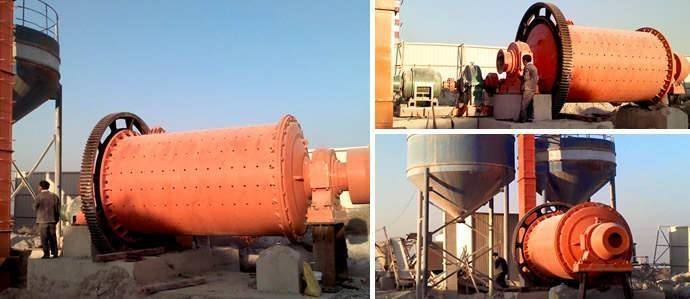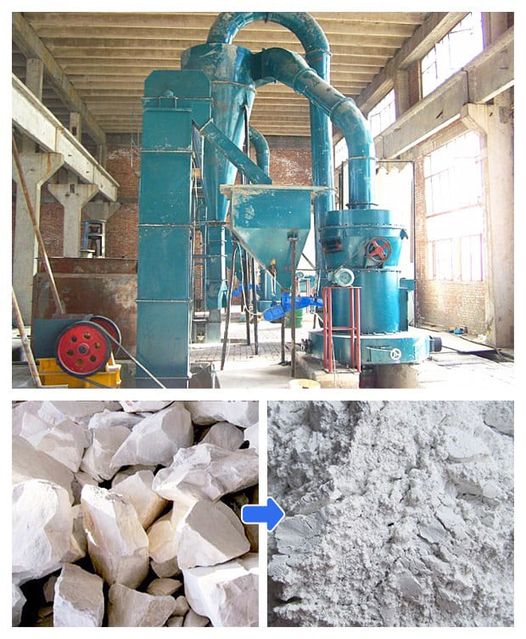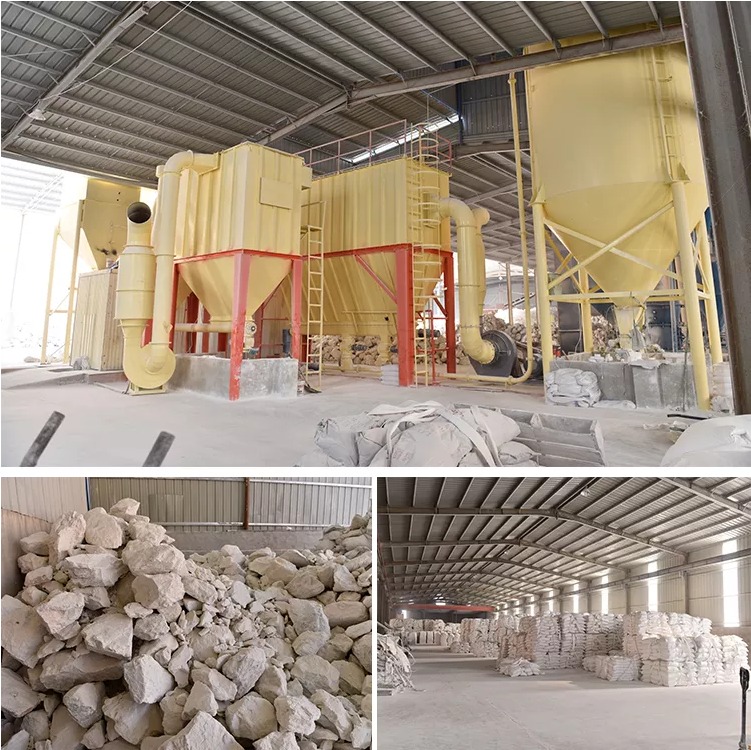Date:2024-02-22 14:49:39 ?? Source:Clirik
Silica powder grinding mill machines are used for processing silica, a mineral compound composed of silicon and oxygen atoms (SiO2). These machines are designed to grind silica into various particle sizes for different industrial applications. Here are some common types of silica grinding mill machines:
A traditional cylindrical-shaped mill rotating on its axis, containing steel balls as grinding media. Silica is fed into the mill along with the balls, and as the mill rotates, the grinding media crushes the silica particles into finer powders.

Ball mills are widely used in the silica grinding process in industries such as mining, metallurgy, building materials, ceramics, and chemical engineering.
Here's how a ball mill for silica grinding typically operates:
l Loading: Silica particles, along with grinding media (such as ceramic or steel balls), are added to the cylindrical chamber of the ball mill. The ratio of grinding media to silica particles varies depending on the desired fineness and the properties of the silica.
l Rotation: The ball mill rotates around its horizontal axis, causing the grinding media and silica particles to tumble and collide within the chamber. The rotation of the mill causes the grinding media to cascade and grind the silica particles into finer sizes.
l Size reduction: The impact and friction between the grinding media and silica particles result in size reduction. As the silica particles are crushed and ground, they undergo further comminution to achieve the desired particle size distribution.
l Classification: In some cases, a classifier or a screening system may be employed to separate the fine silica powders from the coarse particles. This helps to ensure that the desired particle size fraction is obtained.
l Discharge: Once the grinding process is complete, the ground silica powders are discharged from the ball mill through a discharge grate at the end of the chamber. The powders may then be collected in a receptacle or conveyed to downstream processes for further use or processing.
Ball mills for silica grinding offer advantages such as high grinding efficiency, versatility in terms of processing various silica feedstocks, and relatively simple operation. However, factors such as the ball mill's rotation speed, grinding media size and type, and milling time can influence the final product characteristics, so careful optimization is necessary for achieving the desired results.
This type of mill uses rollers to grind materials, including silica, between a stationary ring and rotating rollers. The silica is fed into the mill and is crushed and ground by the rollers, producing fine powders.

A silica Raymond mill is a type of grinding mill that utilizes rollers to crush and grind silica particles into fine powders. Raymond mills are known for their reliability, durability, and high grinding efficiency, making them suitable for processing various materials including silica.
Here's how a silica Raymond mill typically operates:
l Feeding: Silica particles are fed into the Raymond mill through a hopper or feeder system. The material is evenly distributed onto the grinding table, which is driven by a rotating shaft.
l Grinding: As the grinding table rotates, the rollers mounted on the table press against the silica particles. The rollers exert pressure on the material, crushing and grinding it into fine powders. The grinding process may involve multiple passes to achieve the desired particle size.
l Classification: After grinding, the fine silica powders are carried by air or a fan to a classifier located above the grinding chamber. The classifier separates the particles based on size, allowing only the fine powders to pass through, while coarse particles are returned to the grinding zone for further processing.
l Collection: The classified fine silica powders are collected in a cyclone separator or a bag filter system. These powders are then discharged from the mill for further processing or packaging.
Silica Raymond mills are commonly used in industries such as mining, construction materials, ceramics, and glass manufacturing, where finely ground silica is required for various applications. These mills offer advantages such as high grinding efficiency, adjustable particle size distribution, and low energy consumption. However, it's essential to ensure proper maintenance and operation to maximize the performance and longevity of the mill.
Similar to Raymond mills, Vertical roller mills also use rollers to crush and grind silica. However, in vertical roller mills, the grinding table rotates while the rollers are stationary, providing more efficient grinding action.

A Vertical Roller Mill for silica grinding is a type of grinding mill that utilizes rollers to crush and grind silica particles into fine powders. Vertical roller mills are commonly used in the cement industry for grinding raw materials and cement clinker, but they can also be used for grinding silica and other non-metallic minerals.
Vertical Roller Mills offer advantages such as high grinding efficiency, low energy consumption, and compact design. They can handle a wide range of feed sizes and moisture contents, making them suitable for grinding various types of silica feedstocks. Additionally, vertical roller mills can be equipped with advanced control systems for precise operation and optimization of the grinding process.
These mills are designed to produce very fine powders, including ultrafine silica particles. They typically use specialized grinding mechanisms such as centrifugal force or high-pressure grinding rolls to achieve extremely fine particle sizes.

The HGM ultrafine mill is a type of grinding equipment specifically designed for producing ultrafine powders. It's widely used in various industries, including mining, metallurgy, chemical engineering, and construction materials. The HGM series ultrafine mill is known for its high efficiency, precision grinding, and reliability. When it comes to grinding silica, the HGM ultrafine mill can offer several benefits:
l High Fineness: The HGM ultrafine mill is capable of producing ultrafine powders with particle sizes ranging from a few micrometers down to submicron levels. This ensures that silica can be ground to the desired fineness for specific applications, such as in the production of high-performance concrete or advanced ceramics.
l Energy Efficiency: Despite its ability to achieve ultrafine grinding, the HGM mill is designed to operate efficiently, minimizing energy consumption. This is crucial for reducing operating costs and environmental impact, particularly in large-scale industrial operations.
l Versatility: The HGM series ultrafine mill is versatile and can handle a wide range of materials, including silica. Whether the silica is in the form of sand, quartz, or other mineral compositions, the HGM mill can effectively grind it to the desired fineness.
l Precise Control: The HGM ultrafine mill offers precise control over the grinding process, allowing operators to adjust parameters such as grinding pressure, classifier speed, and feed rate. This ensures that the desired particle size distribution and product quality are consistently achieved.
l Low Maintenance: The HGM mill is designed for ease of maintenance, with features such as quick access to grinding chambers and wear-resistant components. This reduces downtime and maintenance costs, contributing to overall operational efficiency.
l Advanced Technology: The HGM series ultrafine mill incorporates advanced grinding technology, including multi-stage classification systems and high-efficiency impellers. These technologies enhance grinding performance and product quality while maximizing throughput.
These are some common types of silica grinding mill machines used in various industries such as mining, ceramics, glass manufacturing, and construction materials. The choice of mill depends on factors such as desired particle size, production capacity, and specific application requirements.
Shanghai CLIRIK Machinery Co.,Ltd. are a professional silica powder grinding mill supplier. Welcome to contact us freely.
Shanghai Clirik Machinery Co.,Ltd 2013-2016 all rights reserved. Tel:0086-21-20236178 Fax:0086-21-58974855 Address:No.19Fuqing Rd,Shanghai